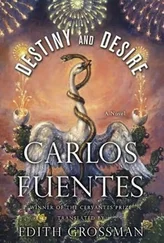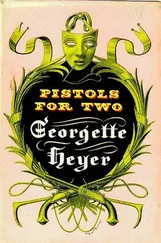— The shame, the shame …
— I gave you everything, and you, nothing.
— The shame, the shame.
— Make me dance naked for you, murmured La Privada, and at the very moment of orgasm she fainted in the arms of Pedro Romero.
The painter, watching the scene through the white view hole of his canvas, felt a twinge of sadness and envy, it was proper that there should be so much envy in Spain, where there was so much to be coveted, but nothing as much as this, the desirable body of the bullfighter embracing the waist of the inanimate, desirable body of the actress, who appeared dead, giving the matador this supreme trophy, the reenactment of the agony in each act of love, because that is what Goya most feared and most envied: that this serious woman of joined brows and downy upper lip, Elisia Rodríguez, La Privada, fainted every time they made love.
Who could stop adoring her after knowing that?
Men would leave her but they would neither forget her nor stop loving her passionately, never, never.
— No man has ever left me. I have sacrificed all my best lovers so as to be the first to break away. Everything comes to an end …
Pedro Romero and Elisia Rodríguez, La Privada, remained asleep, naked, arms around each other, barely covered by a heavily starched sheet that seemed to have a life of its own, bodies and clothes soiled by a bath of oil that was like the blood of the two of them, their bodies joined by a pleasure that separated them, all the secrets of the bodies slipping away in a perpetual flight that the old painter paused to contemplate as one contemplates a Muslim patio where the stone is constantly turning to water, returning to stone, and in water and stone finds no face or object other than the word of God …
This he saw, his heart steeled, faithful witness to the love-making of the matador Pedro Romero and the actress Elisia Rodríguez, his eyes coldly watching, but his heart bitter and his gut wrenched with fire.
This he saw. What he rapidly rendered on his canvas was black-and-white, drained of color, a double-washed sky, dark gray and impure white, the black stone of a cemetery in place of the starched bed, and the bodies dressed, standing, but the man dead, dressed in white frock coat and tie, and white shoes, stockings, and pants, as if for his First Communion, but the occasion was death, the corpse of the man with his eyes closed and his mouth open in agony, without grace, without butterflies, without adornment, held by the unkempt woman, close-browed, emaciated, grasping the head and the waist of the dead man. He, fainted forever, dead in Goya’s engraving, not she, awake in her sorrow.
For once she had been abandoned.
He signed it in the corner and titled it Love and Death.
He looked at the drawing, the drawing looked at him. The dead man opened his eyes and looked at him. The woman turned her head and looked at him. There was no need for words. They had appeared, they were going to appear, with or without him. They had defeated him. They needed him only to form the triangle that would make the act more exciting: the old man watched the act only to excite the young lovers. With or without him, they were going to appear. In 1806, when all this happened, or in 1821, when Goya painted it in his Quinta del Sordo, or even today, when all this is happening.
3
Don Francisco Goya y Lost Census bought a pistachio ice cream in the sweet shop on the Plaza del Salvador, turned down Villegas, and entered the small plaza of Jesús de la Pasión, where the famous actress Elisia Rodríguez, La Privada, was performing this Holy Saturday of the Resurrection. Out of the corner of his eye the old painter, licking his green ice, saw the bridal shops that were the dominant businesses in the square, which was called the Plaza del Pan when Cervantes wrote there, and he mockingly compared the organdy and tulle outfits with the hoods and long skirts of the Virgins carried in procession through Seville. Of course, the skirts that draped the Virgin from waist to ground, like those on the mannequins in the shops, only served to cover a taper, the underlying wooden structure of the image, which has features carved only on its face and hands.
La Privada, Elisia Rodríguez, in contrast, was dressed as a Maja, with low-cut Empire gown and shoes of silver silk, her splendid body not reduced to hands and face. Had he seen her? Of course he had, he had even painted her. But it would be truer to say that, because he had painted her, he had seen her. But now the painter was crossing a patio rimmed with orange trees whose dropped fruit lay rotting on the cobblestones, coming to see the model, to ask her to pose nude for him.
She received him out of curiosity. Is he famous? she asked her lover, Pedro Romero, and the bullfighter said he was, he was a famous son of Aragón, a peasant, but also a painter of the court and all that; they said he was a genius.
Is he amusing? At times, answered Romero, when he paints attractive things, festivals, parasols, kids playing, girls running, bulls in the plaza, all that. He paints kings — very ugly he paints them, but if they like it, what can you do? And then he paints dreadful, awful things, women with monkey faces, women selling their daughters, witches, old women fucking, horrible things. And you, has he painted you? Once, from a distance, awaiting the charge in the ring, and another time, killing. He’s told me he wants to do a canvas that will make me immortal. Well, my immortality is no more than two passes of the cape and a flourish over the head of the bull. The rest, Elisia, I will never see, nor you either. Come on, dance naked just for me.
He took off his high hat. He wasn’t going to hide his years. His hoary crest sprang out, freed from its high, narrow prison. They exchanged banalities, sweets, drinks, thanks, compliments, praises, candied egg yolks, and then he repeated that he wanted to paint her. And she said she already knew that, through Romero. And he said that Romero neither knew nor, perhaps, approved of what he wanted. And what was that? Then the old deaf painter, looking at her in a way that seemed to say “I have eyes, all the rest has failed me, but I have eyes, and my blood throbs,” said simply that actresses die. She knew that; he ate an egg yolk as if to seal the comment. They die, he continued, and if they get lucky they die young and beautiful, but if their luck fails them they lose their youth and beauty: then they are nothing. I know that, replied La Privada, that’s why I live for today, and that is my message every time I love or sing or dance or eat: there is nothing better waiting for me, this is today and tomorrow; and only today is real for me — only today. No, but there is a way of surviving, continued the old man. I know, she said, a painting. Yes, but nude, señora.
— You’re asking for yourself? she asked him, suddenly switching to the familiar form of address.
— Yes, and for your lover, too. Someday, one of you will die. The two bodies that are so drawn to each other will be separated. Not by choice, not in anger, not at all, but by something that cruelly crushes our will and our whim. We are born separate, we meet, and in the end, death will separate us again. That is intolerable.
— For you, perhaps. I, truthfully …
— No. Elisia … I may call you Elisia?… For your lover and, yes, for me, too, it would be so, it would be intolerable to cease to love only because death intervened.
— So you like me?
— I desire you.
— Then you may have me, Paco, you may take all of me for yourself, in fact and not in a painting, but on one condition sweetie …
Sitting there, a little stooped over, his high hat in his gnarled, agile hands, the serious hands of an artist and a teamster, the deaf man felt stripped. The actress ran to an ornate Tabasco wooden chest she had gotten from her servant Guadalupe, knelt down, opened it, poked among the clothes, releasing an intense smell of musk, and she extracted something that was wrapped in lace shawls, and from inside that, a green velvet case, and, with sensual urgency mixed with religious respect, with the delicacy of her long, loving, digging fingers, which could be claws when she wished, feathers if she pleased, the actress finally pulled from the case a portrait, which she showed to the painter. His eyesight already faded, he held it in front of his nose, smelling, more than anything, the whiff of sulfur that clung to the portrait, an odor that even a heretic like Don Francisco de Goya y Lucifers associated with the Malignant One, Asmodeus, Beelzebub, Satan, and was this his portrait, the portrait of the devil himself? Why not? Intense green eyes set in dark sockets dominated his fine features, giving them a kind of resignation that Goya associated with his own demons, and looking from the portrait to the woman who offered him that diabolic image, Goya leapt from painting to grammar, only the non-possessive pronoun defined this otherwise ordinary and unusual man, who had been captured in a portrait of repulsive fidelity.
Читать дальше












